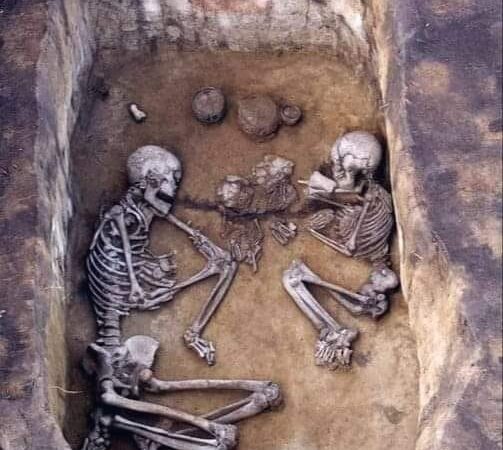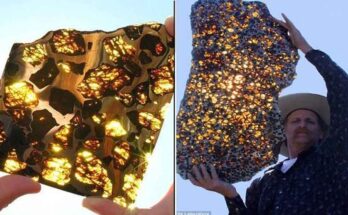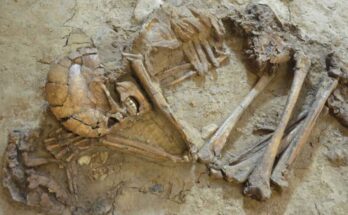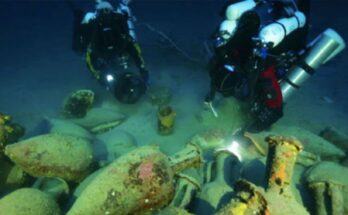Pictured: Two adults with two small children in the middle
Recent excavations in the Siberian village of Staryi Tartas, located in Russia’s Novosibirsk region, have uncovered a Bronze Age necropolis comprising approximately 600 tombs. The site has been identified as belonging to the Andronovo culture, which thrived between 1800 and 1400 BCE in what is now modern-day Iran. This identification was made based on the distinctive grave goods found within the tombs, which are characteristic of Andronovo funerary practices.
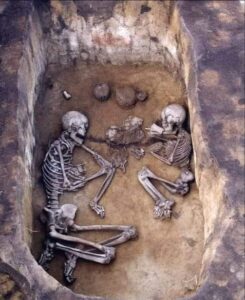
Among the most striking finds at this necropolis are several burials containing the skeletal remains of adults embracing each other, as well as other graves with combinations of adults and children, and some exclusively containing children. These unique burial practices have captivated researchers and sparked a range of theories about the cultural and ritualistic significance of these interments.
On a superficial level, the presence of couples interred together might suggest a romantic or idealized notion of eternal companionship, as if the individuals chose to remain together in the afterlife. However, Professor Lev Klein from St Petersburg State University proposes a more complex and potentially macabre interpretation. Klein suggests that these burials may be linked to ancient rites of reincarnation influenced by “deeksha” ceremonies from the Indian subcontinent, associated with Hinduism, Buddhism, and Jainism. Deeksha rituals, known for their symbolic “second birth,” often included a ritualistic sexual act to complete the ceremony. Klein hypothesizes that the ritual may have involved the deceased’s family recreating the ceremony postmortem, potentially through symbolic acts of sacrifice and the simulation of sexual intercourse in the grave.
Klein’s theory posits that the presence of a male and female in the same grave might indicate a ritual sacrifice where the woman’s role was symbolically fulfilled. This raises questions about the identity of the females in the graves—whether they were actual spouses or victims of ritual sacrifice. The theory also struggles to explain the graves with children, suggesting that either the deeksha rite involved more participants or that these graves might reflect a different ritual or familial practice.
Another hypothesis is that these burials represent nuclear family units, emphasizing the significance of family bonds in the Andronovo culture. This theory explores various scenarios: whether the spouse was sacrificed and placed in the grave following the death of the other, if the grave was kept open to add the spouse later, or if the entire family perished simultaneously due to an accident or disease. The graves containing both adults and children might indicate familial relationships, raising further questions about the nature of these relationships and the circumstances surrounding their deaths.
Currently, archaeologists are awaiting the results of genetic testing to shed light on the kinship of the individuals buried in these graves. This genetic analysis will be crucial in determining familial connections and understanding the social and ritual practices of the Andronovo culture. Until these results are available, the true meaning behind these enigmatic burials remains an open question, leaving scholars to continue piecing together the cultural and ritualistic landscape of this ancient civilization.
***Do you want to see more posts like this? Well, today we are continuing our fundraising drive to reach our goal. All funds raised, go right back into research. If you are able, please help support our group today. Every little bit helps!
